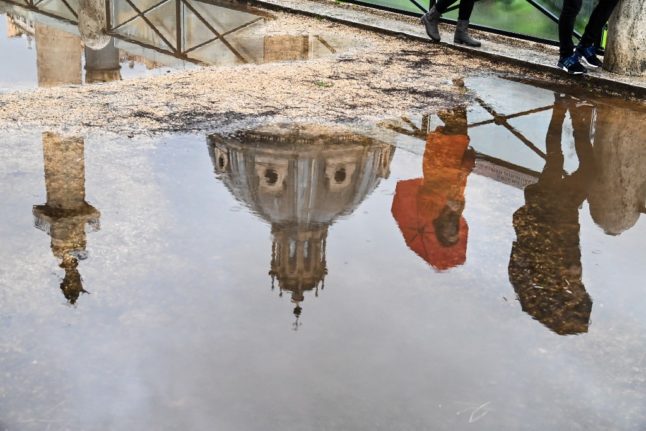Italy’s civil protection department issued a bad-weather alert for parts of Abruzzo, Calabria, Campania, Lazio, Molise and Sicily as thunderstorms followed days of sticky heat.
While many welcomed the prospect of rain in southern areas after months of extremely hot and dry conditions, the weather has turned from one extreme to the other.
READ ALSO: Italy reports a surge in deaths this summer due to extreme heat
Torrential rain has already caused mudslides and severe damage in Campania, near Avellino south of Naples, while two people drowned in a flooded canal in the northern city of Padua, according to Italian news agency Ansa.
Further storms are forecast across the country this week before another heatwave begins.
📅 Mercoledì #10agosto
🔔🟡 #allertaGIALLA in 7 Regioni
Consulta il bollettino per conoscere il livello e le zone di allerta meteo-idro sul tuo territorio 👉 https://t.co/mE6sFKOFBq pic.twitter.com/qWv9JMh05O— Dipartimento Protezione Civile (@DPCgov) August 9, 2022
There have so far been 1,140 ‘extreme weather events’ in Italy this summer, farmers’ association Coldiretti said on Wednesday.
READ ALSO: Will summer 2022 be Italy’s hottest ever?
Along with much of the rest of mainland Europe, Italy has been battered by a series of heatwaves this summer that have fuelled forest fires and drained rivers.
The Po Valley in the north of the Italy, one of country’s most important agricultural areas, is currently experiencing its worst drought in 70 years,
While it’s not yet known if 2022 will be the hottest summer on record, it is on course to be the driest, meteorologists said.



 Please whitelist us to continue reading.
Please whitelist us to continue reading.
Member comments